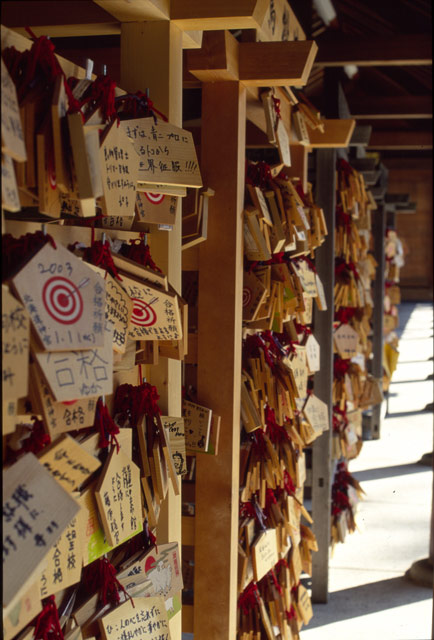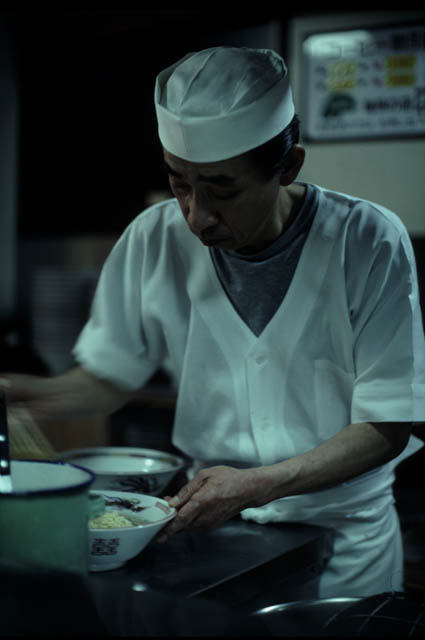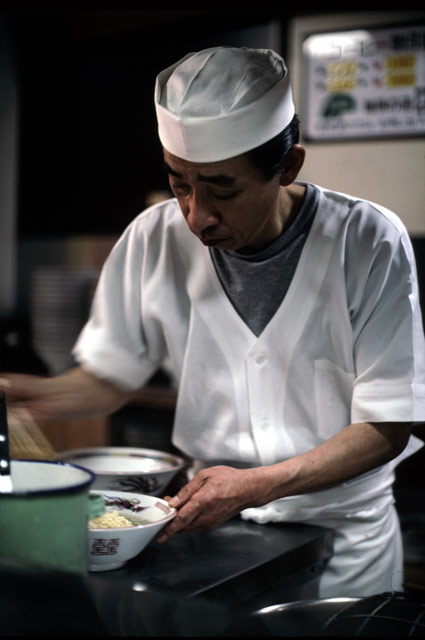Ektachrome E100G
E100G is a very fine grained daylight balanced slide film. Though it has its own peculiarities, it is my favorite general purpose slide film. E100G is one of the new tabular grain emulsions aimed at minimizing the appearance of grain and maximizing sharpness. I believe E100G was put on the market as a tentative replacement for Kodachrome, whose difficult, costly and environmentally sketchy K-14 processing had caused problems for Kodak. With most consumers in the US going digital or losing interest in slide film, kodachrome just did not have the strength to remain widely available. Buying Kodachrome 64 is still easy, but getting it processed is another matter. As far as I know, now that A&I has stopped processing it, there is only one lab in the US and one lab in Europe that processes it. Films that require E-6 processing are another matter. Almost every other slide film, including E100G, is processed in E-6 chemicals. It is still rather easy to get processed wherever there is a decent sized lab. If you are a masochist, you can even do it at home. Kodachrome requires giant machines, mercury compounds, and all sorts of nasty things that the government wouldn't let you do at home, even if you wanted to.

So what are the differences between a film like E100G and Kodachrome? E100G wins the convenience and usability categories hands down -- you can pick up a roll of E100G, shoot it, drop it off and have it back to you in a couple of hours. It is also an easier film to scan than Kodachrome 64, whose high silver content gives scanners problems and prevents you from using anti-dust functions like digital ICE. You also have a higher speed film with similarly inobtrusive grain. There are some differences however. E100G is not nearly as archivally stable as Kodachrome. I don't mean to say it will fade in the next few years, but Kodachrome slides that have been kept in a dark, dry place for the last 40 years still look like the day they were shot. It is uncanny. No one really knows how long these things will last, but I seem to remember that the life expectancy for K64 slides was upwards of 80-100 years, while Ektachrome slides would begin to fade in 20-30. Projection, however, is another matter. Ektachrome slides stand up much better to projection than Kodachrome. If you project your Kodachromes often, you should have a copy made. The fade time (for both, actually) is frighteningly short. After several minutes of projection, the slides begin to measurably fade. Ektachromes last longer, but it is still not wise to just leave them on for long amounts of time.

More readily apparent differences between the films are demonstrated in their individual "characters" or "looks". Kodachrome does skin tones just about as well as you can get them. People look excellent. The colors are very natural, but they can seem a bit bland compared to today's color transparency films and digital cameras. It is my feeling that Kodachrome actually has it right, but that the more vibrant colors of the new films are aimed at shocking the viewer into thinking that the photo is more real because the colors are more saturated and vibrant. The other possibility is that they are compensating for the end product -- photos in glossy mags, scans or even prints can never be as compelling as the original slide, so a bit of overcompensation in the slide could translate to more realistic and compelling reproductions. I think with a colorometer, the colors of the Kodachrome slide would probably be more accurate to real life -- particularly when compared to films like Fuji Velvia, Kodak E100VS and Porta VC. I think E100G strikes a fairly good balance: the colors are saturated, but they are certainly not overblown. I think they generally do a very good job in capturing the essence of any given scene. There are only a few things that sometimes cause me to reach for another film...1. E100G is tough to work with in overcast weather or indoors. It seems to be even more sensitive to color temperature than other slide films, and it can get some very, very nasty blue and magenta casts in cloudy weather, and indoors under tungsten or florescent lighting it is a real beast to get good colors. I don't generally travel with many, if any filters, so when these situations occur, I need to either find another film, or try to correct the casts in photoshop. Though not with E100G (it's a Kodachrome 64 shot), here is an example of a shot with nasty color cast from florescent lighting, and the correction made in photoshop. Though this cannot salvage the slide for projection, it allows you to make use of it on the web, and to make a good print of it using the digital darkroom. Since I do all my color printing via an inkjet, I find this an acceptable situation.

